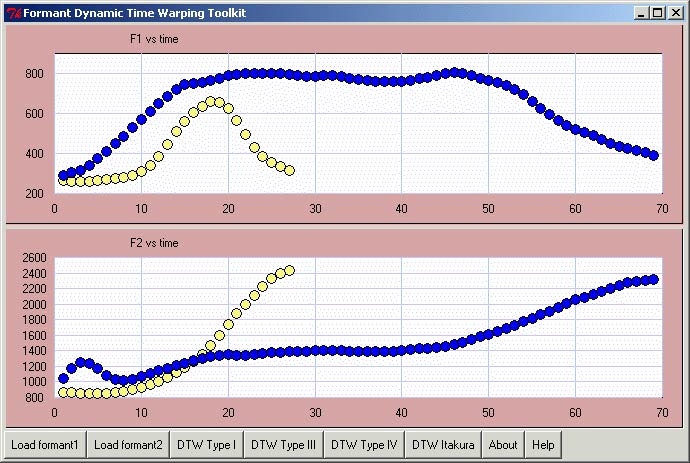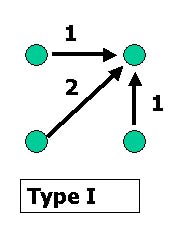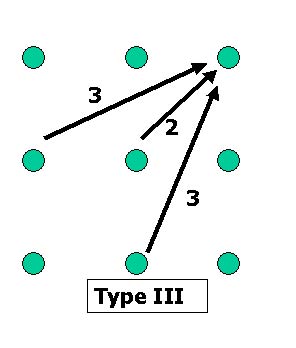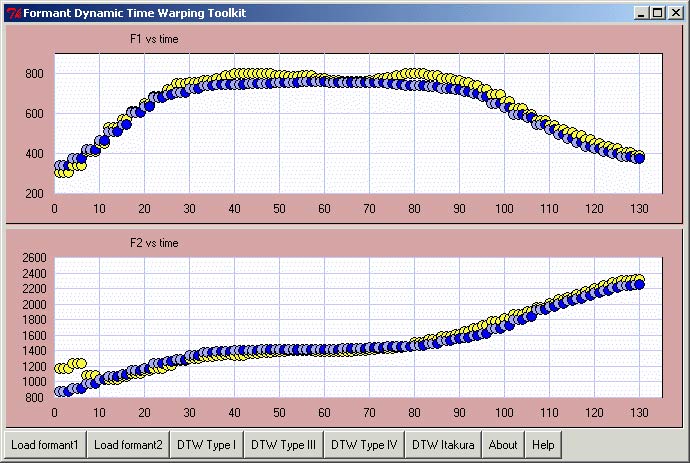FormantDynamicTimeWarping
Introduction
FormantDynamicTimeWarping allows a graphical inspection of the effects of a dynamic time alignment of a pair of feature sequences. The feature sequences involved, are the frequences first and second formants.The user selects the sequences to be examined by loading them from a .fmt file previously made with the FormantArchiver application. For example, the feature sequences for the word "right" spoken quickly and slowly are displayed as:

Here the yellow curves represent the feature sequence of the short utterance of the word "right" and the blue curves represent the feature sequenc of the long utterance of "right"
The user then selects from one of four choices: type1, type3 , type4 or Itakura.
Type I
When applying type 1 we get
What is happening is that the sequence is being "stretched out" to given the best possible match between the two sounds. At the beginning we see a light blue and a deep yellow. The light blue, indicates that the blue is values are held fixed, as time passes for the deep yellow. Then the roles reverse, time passes for the blue, indicated by a deep blue, while the yellow remains fixed, and is displayed as a pale yellow. These roles keep interchanging until we reach the end. In terms of dymamic programming, type I is representated by:

Type III
Type III is governed by
So we must consider a different set of curves which are not too different in length. We take as our example two occurances of the word "right" which are said at about the same rate.

Then applying Type III to this we get

Itakura Type
Itakura type always moves 1 to the right and 0, 1 or 2 up, with the additional constraint of disallowing to consecutive moves to the right (with no upward movement). Weighting on Itakura can be interpreted as distance is the horizontal distance, ie number of steps to the right. This makes it desirable as a rule of thumb to put the shorter sequencence as the horizontal sequence.

Type IV
Type IV is similar to Itakura, except that we allow consecutive moves to the right.
